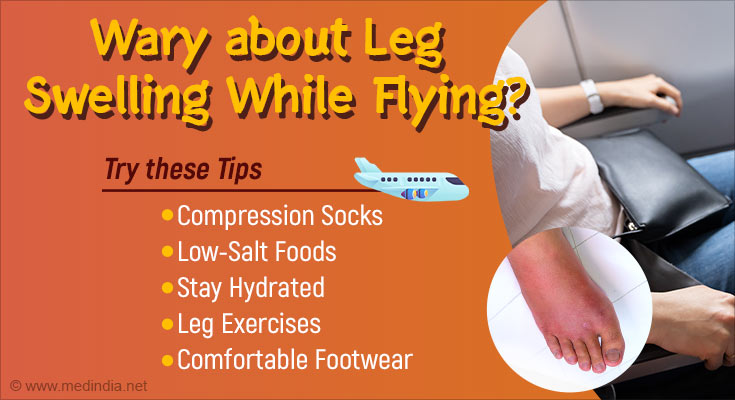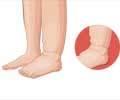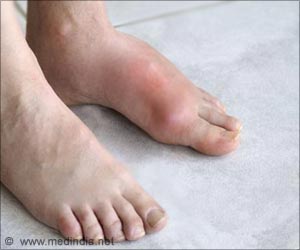
- It is normal to experience swelling in the legs and feet when flying, which is probably due to spending a lot of time in a motionless sitting position
- The major causes of leg swelling include stationary position, gravity effect, high salt intake, deep vein thrombosis, medications, and underlying disease conditions
- Compression socks, hydration, leg massage, leg workouts, and comfortable footwear can mitigate leg swelling during flight travel
Why Does Flying Cause Your Feet to Swell?
It all boils down to spending a lot of time sitting still and not moving during flights.The Gravity Effect
Blood pools in the veins of the legs when one sits with their feet on the floor for an extended period of time. Seated posture also puts more pressure on the veins in the legs. This contributes to edema by causing fluid to migrate from the circulation into the soft tissues around it (1✔ ✔Trusted Source
Formation of edema and fluid shifts during a long-haul flight
Go to source).
When sitting, the muscles that help pump fluid out of your legs are inactive, fueling more leg swelling.
The longer you are sitting still, the more gravity pulls fluid down to your feet and ankles. Additionally, the bent legs and elevated pressure on the veins caused by your sitting position exacerbate swelling in the affected areas.
Extended-haul flights cause a considerable buildup of fluid in the lower limbs, specifically the thigh and lower leg. After the flights, the increased tissue thickness can even persist for a few days.
Deep Vein Thrombosis
Leg swelling can occasionally be brought on by a potentially fatal blood clot known as deep vein thrombosis (DVT). However, for healthy individuals, the chance of developing DVT while flying is quite low, particularly for shorter journeys than four hours. Generally speaking, traveling longer than 12 hours increases the risk of developing DVT.
High Salty Foods
We frequently eat at restaurants, grab snacks, and eat other processed meals that are heavy in salt while we travel. This will increase the amount of salt in our bodies, causing an increase in fluid and further exacerbating swollen legs.
Underlying Diseases
Regardless of altitude, a number of medical disorders, such as those affecting the heart, liver, thyroid, and kidneys; pregnancy; obesity; sleep apnea; and venous insufficiency, can result in swelling in the legs or feet.
Leg edema can also be brought on by lipedema, or the maldistribution of fat, and lymphedema, or the buildup of protein-rich interstitial fluid.
Medications
Certain drugs, such as steroids, hormone treatments, and antihypertensives, can occasionally exacerbate edema.
What are the Common Signs and Symptoms?
If a person has swollen ankles and leg edema due to air travel they may experience the following symptoms:- The leg begins to feel heavy or full
- The leg appears swollen
- When someone presses the swelling, it leaves a dent (Pitting edema)
- Clothing or jewelry on the legs begins to feel tight and uncomfortable
- The skin around the swelling feels warm or tight
- It becomes harder to move the foot
- The surrounding area feels taut, and occasionally there is pain
- Leg swelling
- Leg pain or tenderness
- Warm skin and painful to touch
- Skin redness surrounding the ankle
How to Prevent Air Travel-Induced Leg Swelling?
Pre-flight prevention tips
People who have high-risk medical conditions or who are concerned about developing DVT while traveling ought to consult a healthcare provider. People who may be more susceptible to DVT when flying include those who have just undergone surgery, people with a history of blood clots, pregnant women, and people who use specific medications, such as hormone replacement therapy.
Prevention Guidelines During Flight Travel
Keep Hydrated
Drinking more water can help remove excess salt from your body, which can cause fluid retention. The day before and the day of the journey, make sure you hydrate well to avoid being dehydrated from the outsetCut Down on Salty Foods
On the day of the trip and even the day before, try to stay away from salt as much as possible. Salt can make you retain fluid, which can exacerbate the swelling in your feetPrefer Compression Socks
When taking a long flight, using compression stockings can help minimize swelling in your legs and feet and lower your risk of blood clots. By exerting pressure on the lower legs, the stockings enhance blood circulation.
Studies reveal the prevention of edema and reduced incidence of venous thromboembolism are associated with wearing graduated compression stockings during flights (2✔ ✔Trusted Source
Graduated compression stockings as a prophylactic measure in venous thromboembolism and edema of lower limbs triggered by air travel: a systematic review of clinical trials
Go to source)Leg Strechs
Try to stroll the aisle once per hour or so, especially on longer flights over two hours. Additionally, walking to the restroom might increase blood flow and reduce swellingSeated Workout
You can strengthen the muscles in your feet even if you are unable to stand and move around. To get your feet moving, point your toes up and down and then side to side. Here, the main goal is to activate your legs, calves, and feet muscles after a prolonged period of inactivityAximize Legroom
Your feet will be forced into even more uncomfortable postures that will stop blood circulation if they are crammed into tiny spaces caused by your carry-on luggage. Get your luggage cleared and get enough room for your legsAvoid Crossing Your Legs
Crossing your legs will not improve your circulation, which is already compromised when you sit for extended periods of timeAdjust Seating Positions
Avoid staying motionless for extended periods of time, as this might lead to increased pressure in your leg veins from the way your legs are positioned when sitting. To prevent staying in one place for an extended period of time, periodically adjust your seating positionRaise Your Feed for Better Blood Flow
Elevating your legs can facilitate better blood flow. Try to raise your feet and legs whenever you can; if no one is sitting next to you, spread out and prop your feet up across the seatsChoose Comfy Footwear
On the days you travel, wear slip-on shoes instead of heels since they are easier to take off and let you exercise or massage your feet
After Flight Recommendations
Many of the same techniques you used to minimize swelling throughout your trip, such as moving about, drinking plenty of water, and donning compression socks, can also be used once you've landed. Additionally, keep an eye on your diet and steer clear of meals with too much sodium because they can potentially contribute to additional edema.Note: If you experience persistent leg swelling in one leg or if it develops two weeks after a long trip, get medical attention right away. The swelling can indicate DVT or another condition that has to be treated by a doctor.
References:
- Formation of edema and fluid shifts during a long-haul flight - (https://pubmed.ncbi.nlm.nih.gov/14642200/)
- Graduated compression stockings as a prophylactic measure in venous thromboembolism and edema of lower limbs triggered by air travel: a systematic review of clinical trials - (https://www.ncbi.nlm.nih.gov/pmc/articles/PMC8147891/)
Source-Medindia













